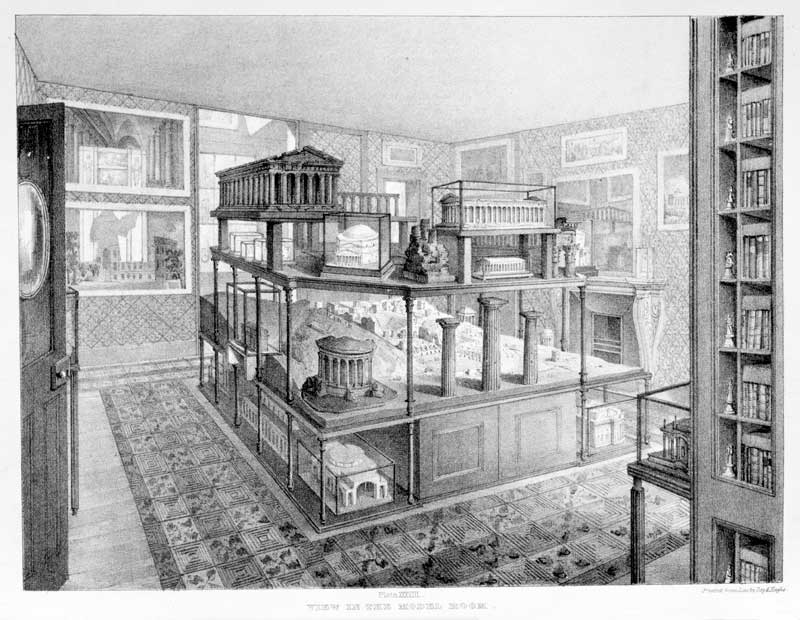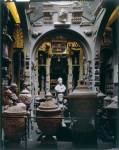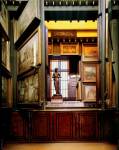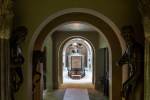Starting at university in London in the mid 2000s, I remember vividly seeing for the first time C.J. Richardson’s watercolour view of the model room at Sir John Soane’s Museum. It showed the room that was once Eliza Soane’s bedroom occupied by Soane’s great model stand that held a dramatic array of models of the ruins at Pompeii, temples at Paestum and the Temple of Vesta at Tivoli, among many others. So, it was with some disappointment that this fresh-faced undergraduate, having rushed to the museum during the first weeks of being in London, found that the cork models were in fact then stored ‘in the attic’.
Now, however, Soane’s models are once again being returned to prominence, thanks to the major ‘Opening up the Soane’ project that is modernising the museum, while reinstating many aspects of Soane’s original vision. Models were fundamental to Soane’s practice as an architect. In one of his famous Royal Academy lectures, he described how ‘Many of the most serious disappointments that attend those who build would be avoided if models were previously made of the edifices proposed to be raised. No building, at least none of considerable size or consequence, should be begun until a correct and detailed model of all its parts has been made’. But their significance for Soane ran far deeper than as mere design tools. Models were vital for both the didactic sides of Soane’s collection and in how he represented himself as an architect.
Last weekend, I attended one of a series of tours organised by the museum as part of the London Festival of Architecture in order to give visitors something of a preview before the completion of the restored model room early 2015. The leader was Tom Drysdale, a young scholar who is currently cataloguing the museum’s collection of Soane’s drawings for his public buildings. As he led us around, particularly interesting was Drysdale’s point about the meaning of the models’ arrangement throughout the house-museum. The models were never meant to be read in isolation but as part of a complex web of interactions. A case in point was the model of the government offices that Soane designed for Whitehall to flank Downing Street which he positioned on the dining room mantelpiece underneath his famous portrait by Thomas Lawrence. This was matched on the mantelpiece in the adjoining library by a model of the three surviving columns of the Temple of Castor and Pollux that peer over the Forum Romanum. For those who Soane entertained in these rooms, including potential clients, this backdrop was a powerful reminder of the lofty claims Soane made for his work.
Elsewhere in the museum, the 14 cork models that so excited me as an undergraduate are temporarily displayed in the New Picture Room that was added by James Wild in the late 19th century. Among them is the stunning model of the Temple of Vesta at Tivoli – Soane’s favourite ancient building – that when being made was doused with black paint and moss to make it look authentically ruined. The Temple of Vesta famously provided the inspiration for Soane’s magnificent ‘Tivoli corner’ at the Bank of England. More broadly, Drysdale made the intriguing point that in many ways the museum itself can be considered a kind of model, peppered as it is with micro-versions of the shallow domes and light wells Soane used in his major buildings. As we looked back across the domed area towards the Picture Room with the great domed spaces of the Bank of England in mind, this immediatelybecame apparent.
Cork model of the Temple of Zeus or Apollo, Paestum (c. 1820), attributed to Domenico Padiglione. Courtesy of the Trustees of Sir John Soane’s Museum

Our final stop was the newly restored north drawing room where we found the utterly exquisite plaster models by Francois Fouquet. Again we see the Temple of Vesta, this time with the Parthenon and one of the temples at Paestum, among several others. Unlike the cork models, Fouquet’s brilliant white plaster models show these buildings in as pristine condition as they were the day they were completed. It is hard to believe they are handmade, so stunning is their precision and detail. Indeed, to modern eyes they seem oddly similar to the new generation of 3D-printed architectural models rendered in white plastic. It is rather fitting, therefore, that these ‘taster’ tours of Soane’s models coincide with theopening of the Royal Academy’s Summer Exhibition, whose architecture room reveals the art of the architectural model that was so important to Soane to be well and truly alive.
The ‘Opening up the Soane’ project is a £7 million initiative to restore, refurbish and improve Sir John Soane’s Museum.
Related Articles







